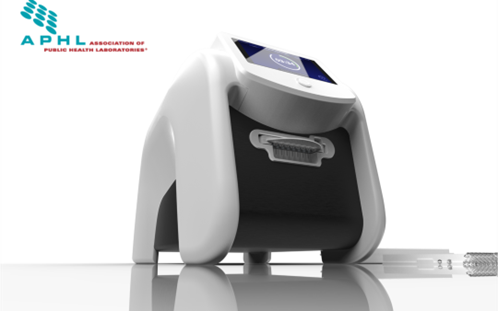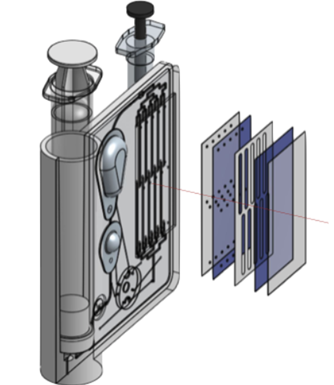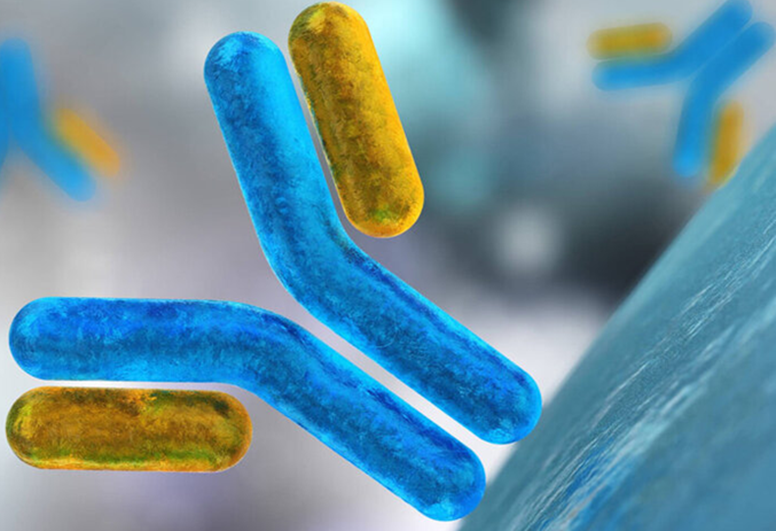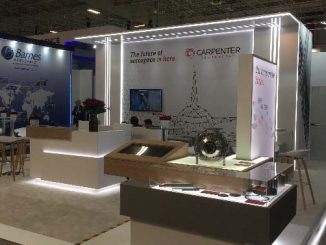
Attendees at this year’s Infectious Disease Lab Con were able to see the NAxtract automation system recently developed by Redbud Labs which is based on its innovative microscopic magnetic pillars to help speed up mixing of fluids being studied. Sponsored by the Association of Public Health Laboratories, the meeting was held in March at Atlanta this year.
NAxtract uses a microfluidic cartridge pre-loaded with reagents for extraction. The entire workflow is fully automated by the instrument, effectively eliminating hands-on time and contamination. The cartridge is built on Redbud’s STR BeadPak, a microfluidic chip that maximizes the extraction yield of magnetic beads. Magnetic beads in the chip rapidly bind with target analytes because of microfluidic agitation induced by the company’s proprietary Post technology. BeadPak delivers magnetic bead kinetics up to 1000x faster than conventional cartridge methods. Magnetic beads from virtually any kit can be ported onto BeadPak, enabling applications in viral RNA, genomic DNA, and circulating biomarkers.

“Magnetic beads are a gold standard for sample prep. The ability to get high yield from magnetic beads in a microfluidic cartridge was essential as we built NAxtract. Going forward, the large catalogue of established magnetic bead-based kits will enable us to rapidly expand our menu of extraction chemistries,” explains Jay Fisher, vice president of research & development. NAxtract brings together into a fully automated benchtop system several of the company’s innovations, which were detailed in a previous report in Magnetics Magazine, and highlighted here.

ts MXR microfluidic chip is the world’s fastest, most adaptable cartridge-ready microfluidic mixing component, the company says. Designed to enable controlled fluid mixing at low volume levels, less than about 200 μL, MXR is a modular, fully assembled microfluidic chip that simply clicks into place in a testing cartridge. It can overcome limitations due to poor mixing and is useful in a variety of life science applications ranging from biomarker discovery to point-of-care diagnostics.
Chemists understand that reaction success depends on effective mixing. At typical laboratory volumes, stir bars, shaking and swirling can all provide adequate mixing, but these techniques are impractical or ineffective at the microscale. MXR is designed to quickly mix a sample with reagents in a microfluidic chamber. The result of using MXR chips is often shortening an assay’s time to read results, also enabling readout from small samples.

Earlier, Redbud expanded its cartridge-ready STR (sorter) microfluidic chip family with the introduction of STRBeadPak. It combines the company’s proprietary Redbud Post technology with off-the-shelf magnetic beads to enable system developers to instantly port their sample prep workflows onto microfluidic cartridges. This product line extension means Redbud’s STR chip line is compatible with a vast catalogue of existing life science workflows.
STRBeadPak is compatible with magnetic beads of virtually any size and surface functionalization, including antibody, oligomer nucleotide, or a generic binding moiety such as neutravidin. Potential workflows include immunoassays, nucleic acid purification, and sorting of extracellular vesicles, microbes, and cells.

“STRBeadPak is the first product of its kind. It empowers system developers to continue using the magnetic beads they know and trust, with full confidence that they have a path to a cartridge-based solution down the road,” said Richard Spero, CEO. He cited a recent study where the product captured 94% of targets in 5 minutes, compared to only 9% for an on-cartridge method, and achieved 1,000x faster target capture versus a conventional on-cartridge method. For more info, see www.redbudlabs.com.



